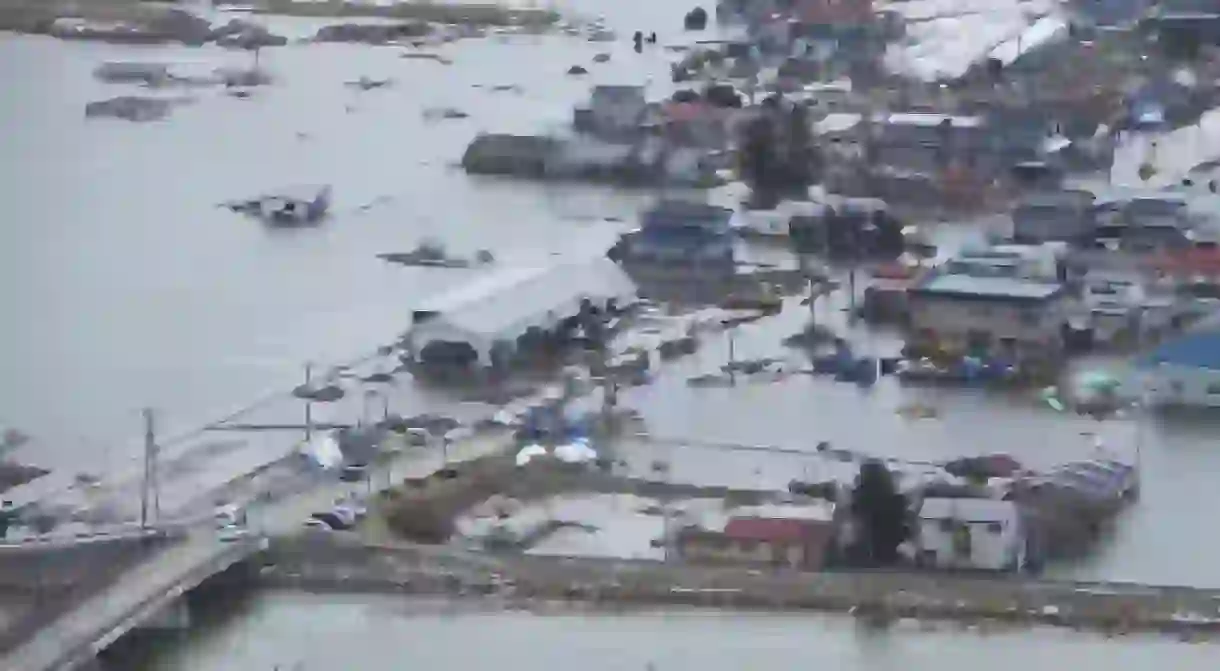Kenji Miyazawa: The Japanese Writer Who Echoed The Natural World

Hiroe Nirei gives an account of the life and work of Japanese writer Kenji Miyazawa — tracking his journey from birth to death, and exploring the work that brought him great acclaim

Throughout his life, Kenji Miyazawa expressed a keen interest in the relationship between mankind and nature. The literary world he created reflected not only the awe-inspiring beauty of nature, but also its merciless brutality and terrifying force. Indeed, his deep appreciation for nature has brought renewed attention to his works in Japan in the aftermath of the massive earthquake and tsunami that struck its coast on 11 March 2011.
Miyazawa was born in Iwate Prefecture on the north-east coast of Japan in 1896, just two months after the Meiji-Sanriku earthquake and tsunami destroyed about 9,000 homes and caused more than 22,000 deaths in the region. In spite of the catastrophe, his family ran a successful pawnshop, and Miyazawa was thus raised in a wealthy environment. Yet looking at the hardships faced by the struggling farmers who came to the shop, Miyazawa felt a strong sense of guilt – he was uneased by the contrast between his abundance of wealth and their poverty. This was only exacerbated as the Northeast region, which was heavily agricultural, was repeatedly hit by cold weather, leading to a dramatic drop in crop harvests.

It is said that being a kind-hearted boy, Miyazawa’s experience of watching people come to his house to sell their clothes and furniture in order to survive influenced his decision to study agriculture and shaped his desire for self-sacrifice. In 1915, he entered Morioka Agricultural and Forestry College where he studied geology, and began writing poems and short stories. After graduating in 1921 and moving to Tokyo, Miyazawa started to actively write children’s literature. After only six months, however, he returned to his hometown of Iwate due to the illness and subsequent death of his beloved younger sister.
Having returned home, between 1921 and 1926 Miyazawa worked as an agricultural science teacher at Hanamaki Agricultural High School while he also continued to write. In 1924, with the money saved from his salary, he published his first collection of children’s stories. Chūmon no Ōi Ryōriten (The Restaurant of Many Orders), which was part of this collection, became one of his masterpieces. In this story, two hunters enter the woods, find a well-ordered restaurant, and enter only to find things to be not as they expected. The human hunters become the unwitting pawns of that which they seek to hunt, and are shown to be weak, helpless, and foolish.
After resigning from his teaching position in 1926, Miyazawa devoted himself to improving the material and spiritual life of the peasants of his native Iwate. He would invite them to his house and teach them agricultural skills in the evening for free. During the day, he worked as a farmer and put into practice the agricultural lessons he taught. His writings from this period show a deep understanding of nature and the people whose livelihoods depend on it.

These stories contain moral and educational elements based on Miyazawa’s conviction that humans must live in coexistence with nature. Gusukō Budiri no Denki (The Biography of Budori Gusukō) strongly reflects Mitazawa’s own struggling life with agriculture. Ginga Tetudō no Yoru (Milky Way Railroad), Kaze no Matasaburō (Matasaburō of the Wind) and Ame ni mo Makezu (Be not Defeated by the Rain), written in the 30s, were published posthumously and are still known as enduring masterpieces in Japanese literature.
In 1933, the Shōwa-Sanriku Earthquake hit his hometown region; Miyazawa spent much of his time with the local farmers to encourage them to continue in their recovery efforts. Half a year later, in September 1933, he died at the age of 37 due to acute pneumonia. A stone pillar was erected at Shimanokoshi railway station on the Iwate coast on which a poem by Miyazawa was carved. Following the devastating tsunami in 2011, the railway station was completely washed away, yet the pillar remained standing as if as a testament to Miyazawa’s indomitable spirit.
By Hiroe Nirei













